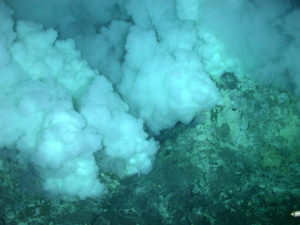We might ask, “how does the Z Group Energy (ZGE) closed geothermal system differ from today’s conventional geothermal systems and why might this difference be significant?
Interesting questions. I’ll answer the second question, the easy one, first. The primary significance, just in terms of economic sustainability and potential positive return on investment, both necessary components of any proposed system is comparatively lower estimated cost of operation. We estimate Z Group Energy’s closed system, utilizing supercritical temperatures to produce electricity at a cost near $0.045/kWh. This is significant because today’s most cost-effective fuel for electricity production, natural gas, currently runs around $0.070/kWh and the second most cost-effective technology is conventional geothermal at about $0.080/kWh – both of which are nearly double estimated Z Group Energy costs. No energy system can be truly sustainable without financial feasibility and Z Group Energy offers that feasibility.

The first question requires a bit more effort. The shortest possible answer, simply addressing environmental concerns or by-product emissions is, the ZGE closed system has a by-product emission of H2O, nothing more and NO FRACKING is required. Natural gas for instance, a fossil fuel, is not renewable, frequently requires at least some fracking and as a power producing fuel emits CO2 and other by-products. Conventional geothermal is renewable if the geothermal reservoir isn’t depleted by extracting heated insitu brines at rates exceeding reservoir recharge ability. However, direct use of insitu geothermal brines tends to bring contaminants such as boron, arsenic, hydrogen sulfide, etc. out of solution requiring treatment both before and after use; a problem ZGE eliminates. As a side note, conventional geothermal plants do sometimes utilize fracking to improve rock strata permeability and electricity production. ZGE does not use fracking – only drilling.
The longer answer regarding differences follows:
Conventional geothermal systems extract earth’s core thermal energy by heat-mining hot underground fluids via a return-well. These fluids carry heat energy, using heated fluid or steam to run a steam turbine, generally via some variation of the Rankine Cycle, converting heat energy to mechanical energy and finally electrical energy. Basically, the spinning turbine runs a generator converting mechanical energy to electric energy for delivery to a distribution grid for use. In many cases, the underground fluids, sometimes called brines due to high chemical or mineral content, may be re-injected into the below-ground reservoir via an injection-well for reservoir recharge. This re-injected fluid is then heated, harvested via the return-well and the process continues. Re-injection sometimes requires an extraneous, supplementary water source.
Conventional geothermal technology utilizes a two-pipe, two-well approach with return wells for harvesting and injection wells used for below-ground reservoir recharge, requiring the expense and unappealing aesthetics of associated piping, valves and appurtenances necessary for a two-pipe / two-well system to function.
A common conventional geothermal issue is depletion of below-ground reservoir levels. It’s important to re-constitute the reservoir for sustained electricity production, but if insitu brines bring chemical or mineral contaminants out of solution via heating and cooling cycles, brines must be treated before being re-injected back into the reservoir. The corrosive, sometimes toxic character of these brines can also damage sensitive power plant equipment if not treated. If these treated brines are not re-injected underground and are discharged to a water course, then additionally, they must be cooled or the receiving ecosystem may be thermally damaged and the wasted brines must now be replenished using an outside water source.
By contrast, the closed ZGE system uses the same heating cylinders (wells) for convectively heating and reheating, thereby eliminating any need for re-injection wells and associated costs and poor aesthetics related to extra piping connections, valving, etc. The ZGE heating cylinders (wells) are completely closed, containing only clean fluid internally provided from within the system itself. This is contrary to conventional geothermal technology where all return wells have perforated bottom sections for collecting hot geothermal brines, which as mentioned, may be corrosive or toxic. Conversely, injection wells must be perforated for reservoir re-injection. These conventional open-wells invite logistical environmental hazards and increase operating expenses, all of which ZGE’s System avoids.
The ZGE system heats its own internal fluid via thermal conduction from adjacent, below-ground hot rock and internal, non-partitioned convection and heat transfer. This eliminates concerns regarding permeability of underground rock strata as no fluid is required to flow through hot rock. Any need to increase rock strata permeability via high pressure injection or fracking is eliminated. Convective flow regimes will establish themselves within the ZGE heating cylinders and Exchange Chamber pending design considerations utilizing critical or sub-critical flows, system pressures, etc. The ZGE non-partitioned flow regime, while reducing the individual harvesting capacity of each well somewhat as inflow and outflow are convectively simultaneous, also eliminates double piping and injection wells required conventionally resulting in overall net reductions in well and piping costs while not sacrificing production capacity.

(Photo from Photo Bucket)
The closed ZGE system can use pure water, never exposing equipment or the environment to potentially toxic or corrosive underground brines. I should mention here, the ZGE system is not limited to water as the thermal energy carrier and is a closed system, so any fluid possessing high heat carrying capacity can be utilized with virtually no danger of pollution, assuming structural integrity of the system remains intact. In any event, fluid cooling is not an issue with the ZGE system either, because other than planned system bleed-off or slight accidental leakage and evaporative losses, the fluid is reused in a continuous heating-cooling-heating cycle. After start-up, replacement water demand is much less than for conventional open geothermal systems, reducing operating cost.
Electricity production typically requires vast amounts of water heated in a boiler, then flashed to steam powering a steam turbine, generator, etc. This water demand can be as high as three tons of water per single MWh, therefore a cost-effective fluid source is critical. This enormous water demand has it’s own environmental and sustainability issues. The ZGE system drastically reduces the water needed and the cost of meeting this fluid demand because after initial system start-up, the only water replacement demand results from planned system bleed-off, leakage and evaporation. At The Geyser’s geothermal plant in northern California for example, the ZGE system would very likely eliminate the need and operational expense of operating the costly Southeast Geyser’s Effluent Pipeline currently employed to recharge Geysers’ below-ground reservoirs for sustained electricity production.
To summarize, the Z Group Energy closed geothermal system differs from conventional geothermal technology and is significant for the following reasons:
- The ZGE system is closed, thereby reducing environmental impacts.
- After start-up, operational water demand is comparatively small.
- All emissions other than water are eliminated.
- Toxic/corrosive aspects of insitu brines are eliminated.
- Treatment of insitu brines is eliminated.
- Need for cooling of insitu brines is eliminated.
- Re-injection wells and extraneous piping and appurtenances are eliminated.
- Fracking is eliminated.
- The ZGE system, utilizing supercritical temperatures appears to be a singularly cost-effective method proposed for production of electricity. For comparison, please refer to the Z Group Energy Home Page and open the link provided to the Energy Technology LCOE (Levelized Cost of Energy) Comparison worksheet showing operating costs for most major energy production technologies.
- If supercritical temperatures are not employed, ZGE’s system will still be cost competitive with conventional geothermal technology and natural gas, but provides the added benefit of eliminating all environmental emissions excepting water.
I hope this comparison helped you understand our Z Group Energy system more fully and why it is significant in today’s energy market. If you have questions, please feel free to contact Bruce at his email: [email protected] , by commenting on any page of this website, on our Facebook Page or on our YouTube Channel. Thank you for spending time with us.